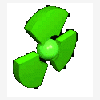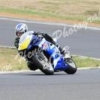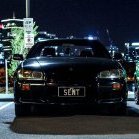Rotational Idle & Cats
Announcements
-
Similar Content
-
Latest Posts
-
Ha ha ha, this stuff they had was installing Toshiba PLCs that were made some time in the 1990s, and they were replacing GEM80 PLCs. To let those two talk (staged upgrade along a ~1.2km long building that was split into 4 sections), was a bunch of WinXP machines running Java gateways... There was no way to put something like ProfiSafe in... Most of the HMI machines were WinXP, with Java program, with a custom button board emulating a keyboard... About the only buttons in the operator stations that went direct to the PLCs was the eStop. There was some interesting design stuff in that place...
-
Stock bypass valves are good for plenty of boost.
-
Check for fuel flow out of the outlet end of the rail. Check for spark. Try to start with aerostart (or pressure can brake cleaner or similar solvent in a car) prayed in through TB. If you have fuel and you have spark and it will fire on substitute fuel, then seriously suspect that E85 sitting for ages in your fuel system has destroyed something and put it in your injectors.
-
Nissan stock oil pressure is typically about 1 bar at 1000 rpm plus about 1 bar per thousand revs on top.
-
Luckily for safety applications, with dedicated links not being used for any other traffic, you simply run ProfiSafe (or an equivalent safety comms protocol from other vendors) over the top of ProfiNet (if that's what you're using, or Ethernet IP if you're stuck in the world of American PLCs and not verking vis ze Chermans) and the redundancy is more about being able to know that you need to cause a system diagnostic lockout because you've lost one of your comms channels, rather than not knowing that you've lost your only comms channel. Granted, heartbeats and all that are possible and useable and all that, but some safety applications are are so time critical that you might not be able to afford a few milliseconds until the next check.
-







Recommended Posts
Create an account or sign in to comment
You need to be a member in order to leave a comment
Create an account
Sign up for a new account in our community. It's easy!
Register a new accountSign in
Already have an account? Sign in here.
Sign In Now